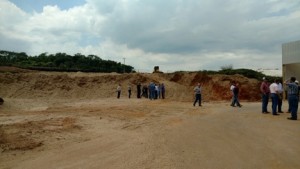by Sandy Johnson, livestock specialist
 In general, the agriculture community recognizes that it ranks among the most hazardous industries. Modern equipment has seat belts and rollover protection, shields around power take-off shafts and other moving parts. Safety equipment is available to help protect workers when handling pesticides, anhydrous ammonia or other chemicals.
In general, the agriculture community recognizes that it ranks among the most hazardous industries. Modern equipment has seat belts and rollover protection, shields around power take-off shafts and other moving parts. Safety equipment is available to help protect workers when handling pesticides, anhydrous ammonia or other chemicals.
The Colby Fire Department is now equipped with a grain cofferdam that can be used to save people engulfed in grain. Despite these improvements, accidents can and will occur so it is important to learn about potential hazards rather than gaining first-hand experience.
Until recently I must admit to being relatively clueless to specific hazards associated with silage. One of the dangers is from avalanches of the feed-out face. A cubic foot of silage weights somewhere around 45 to 50 lbs. Someone covered with even 3 feet of silage cannot free themselves because of the roughly 1000 plus pounds of weight. If you aren’t tall enough to reach over the top of the feeding face, there is risk with standing close to the face of the pile.
For a child this does not take a tall pile. Unfortunately, avalanches are unpredictable and can happen in an instant so we must use safe practices. KSU Professor Emeritus Keith Bolson recommends not approaching the feed-out face on foot within 3 times the face height (within 30’ of a 10’ face) and always practice the buddy rule so if something does occur, there is someone to help. When on top of the pile, stay back from the edge a distance no less than the height of the face. When taking a sample from the face of the pile, do so in a loader bucket. For other suggestions from Dr. Bolson on silage safety, see his video on the KSUBeef.org You Tube Channel. Stay safe, don’t become complacent, be aware of your surroundings and potential dangers at all times and review safety concerns with employees and visitors.